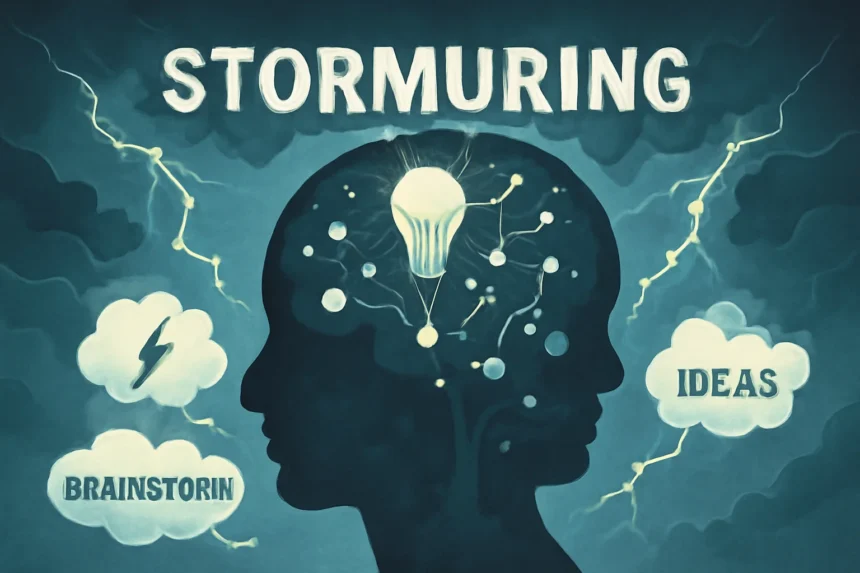A Whisper Before the Storm
The wind howled across the open plains as Maya stood at the edge of her failing project. Deadlines loomed, her team was exhausted, and her ideas were scattered like leaves in a tempest. Yet, in that storm of confusion, she stumbled upon something remarkable a way to channel disorder into innovation. That discovery, later known as stormuring, would change not only her project’s fate but her entire approach to creative thinking and leadership.
Stormuring was born out of necessity a fusion of storm and nurturing, capturing the essence of transforming chaos into structured brilliance. Like lightning captured in a bottle, it thrives on intensity, but it also requires patience and care to direct its power.
Understanding the Concept of Stormuring
Where Ideas Collide
Stormuring is the deliberate act of inviting disruption into the creative process. Instead of resisting confusion or complexity, it embraces them, allowing ideas to clash, merge, and evolve. It’s brainstorming redefined less about listing ideas, more about letting them fight, fuse, and forge new possibilities.
In stormuring sessions, teams often dive into seemingly unrelated concepts, challenging assumptions and reframing problems from multiple angles. The beauty lies not in finding quick answers but in uncovering unexpected connections that lead to meaningful innovation.
The Psychology Behind Chaos and Creativity
Why Disorder Fuels Innovation
Our brains crave patterns, yet they thrive in uncertainty. Studies in cognitive science reveal that moments of confusion often precede breakthroughs. The human mind, when forced to make sense of disorder, sparks creative insights that linear thinking can’t achieve.
Stormuring leverages this principle by creating a safe space for mental storms. Here, failure isn’t just accepted it’s expected. By stepping into the unknown, participants train their brains to link disparate ideas, forming a web of innovation rather than a straight line of logic.
Steps to Practice Stormuring Effectively
1. Set the Stage for Creative Chaos
Before stormuring can begin, psychological safety must be established. Participants should feel free to express wild, even absurd ideas without judgment. A moderator can guide the session, ensuring that energy flows but remains purposeful.
2. Introduce Controlled Disruption
Bring in external stimuli images, sounds, or random prompts. These trigger unexpected associations. Encourage participants to question everything, even the problem itself. The goal is to shatter conventional thinking patterns.
3. Capture and Cluster Ideas
Once the storm settles, gather the fragments. Group similar ideas, highlight recurring themes, and identify patterns. This stage transforms chaos into clarity, revealing insights that might otherwise remain hidden.
4. Reflect and Refine
Reflection turns stormuring into results. Evaluate the outcomes, identify what worked, and refine the best ideas into actionable strategies.
Applications Across Industries
In Business
Companies use stormuring to break through innovation plateaus. Instead of relying on predictable brainstorming, teams use stormuring to challenge assumptions about products, processes, and markets. It has been instrumental in developing breakthrough campaigns, user experiences, and even organizational cultures.
In Education
Educators apply stormuring to engage students in critical thinking. By introducing creative disorder into lessons, teachers encourage exploration and adaptability skills essential for the modern world.
In Technology
Tech innovators embrace stormuring to solve complex, open-ended problems. By mixing disciplines design, coding, psychology, and art they find solutions that a single perspective could never uncover.
Challenges and How to Overcome Them
Managing the Storm
The biggest challenge in stormuring is balance. Too much chaos leads to confusion; too little stifles creativity. Skilled facilitators maintain this delicate equilibrium, knowing when to push boundaries and when to pull back.
Cultural Resistance
Organizations rooted in rigid hierarchies may struggle with the openness stormuring requires. Overcoming this involves nurturing a culture that values experimentation over perfection and learning over control.
The Future of Creative Collaboration
As industries evolve, adaptability becomes the new competitive edge. Traditional brainstorming is no longer enough innovation now requires agility, diversity of thought, and emotional resilience. Stormuring embodies this future, blending logic with imagination, structure with spontaneity.
In a world where change is the only constant, stormuring offers a method to not just survive the storm, but to ride its waves toward progress.
Conclusion: Turning Turbulence into Triumph
From Maya’s turning point to global innovation labs, the principle remains the same: chaos can be fertile ground for growth. The art of stormuring reminds us that creativity is not born in silence but in the roaring winds of uncertainty. When we learn to nurture the storm rather than fear it, we unlock a deeper potential one that turns turbulence into triumph, and ideas into impact.





